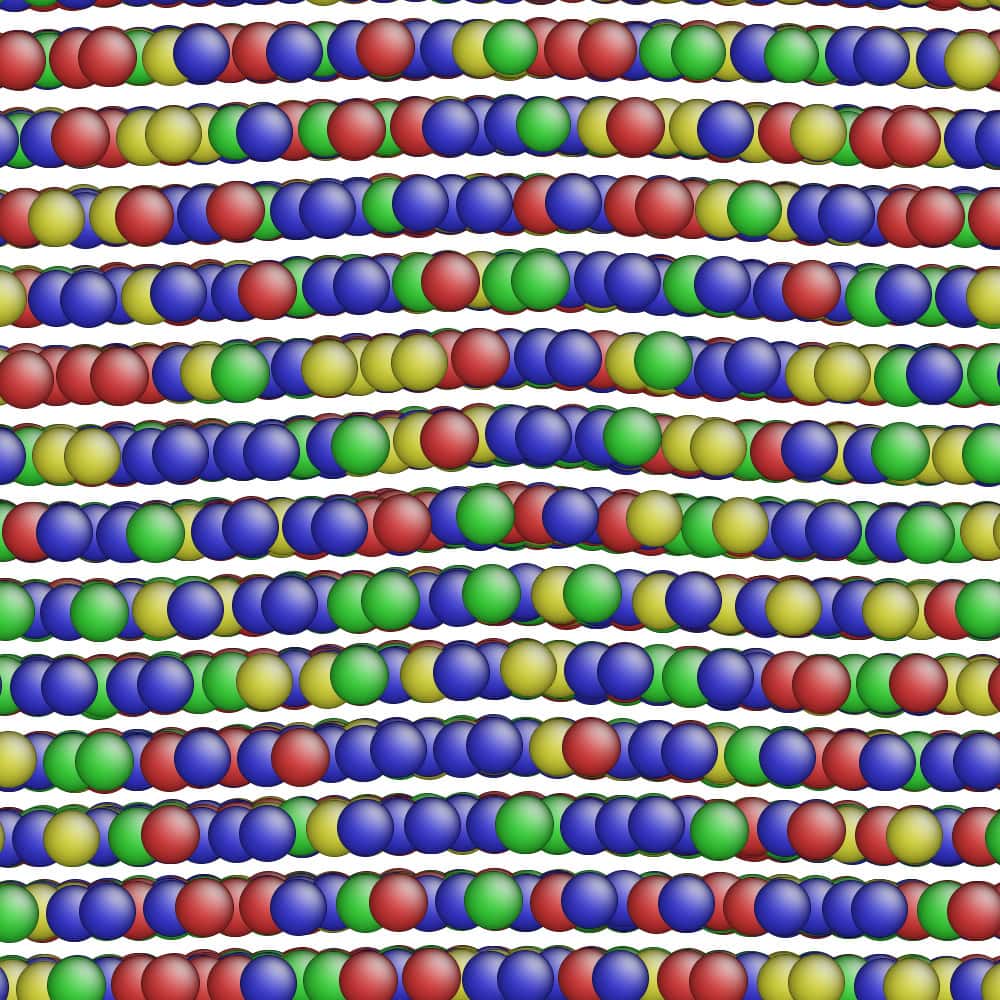
$2M to fast track stronger alloys
Machine-learning could guide engineers towards harder and tougher metal.

Machine-learning could guide engineers towards harder and tougher metal.
Machine-learning could allow engineers to fast track the search for metal alloys that are both hard and tough. A U-M-led project—funded with $2 million from the National Science Foundation—aims to use this technique to double the hardness of the current record-holders.
To make alloys both hard and tough, engineers need to tune the composition and arrangement of metals in the alloy. Exhaustively manufacturing and testing each of the many thousands of possible metal combinations slows alloy discovery to a seemingly glacial pace. Now, the team of researchers at U-M, Arizona State University and the University of North Texas will use a combination of machine-learning predictions, experimentation and simulation to speed up the process.
“We want to know how to change an alloy’s atomic structure to increase strength and the manufacturing conditions required to make those alloys at large scales. But, the number of variables is too high,” said Liang Qi, one of the project’s principal investigators and an associate professor of materials science and engineering at the University of Michigan. “It is impossible to test them by trial and error. The beauty of AI is that we can find the best solution without testing every combination.”
Pushing alloy strength in this way could enable more fuel-efficient vehicles.
“If your car or airplane is lighter, it requires less fuel to move, but you still want the vehicle to be strong,” said Qi. “With stronger alloys, you can potentially use less material but withstand the same amount of force.” Stronger metals also likely withstand higher temperatures, which could allow jet engines to burn fuel hotter and more efficiently, Qi added.
The team hopes machine-learning can guide them toward an alloy that is twice as hard as the current record-holders, alloys of tungsten, molybdenum, tantalum and niobium. A cylinder made from these alloys, a little over one inch in diameter, can sustain the weight of 30 adult African elephants without permanently compressing.
But, for stronger alloys to be useful, they can’t be too brittle, a common feature of many hard materials. Ceramics and glass, for example, are very hard because it takes a large amount of force to bend them, but they aren’t very tough – the instant that they bend, they break. In contrast, tough materials, like rubber, are often soft because they don’t require much force to bend, but they don’t easily fracture when bent.
“We want to find the right mix of metals to optimize alloy hardness without sacrificing too much toughness,” said Feng Yan, another of the project’s principal investigators and an associate professor of materials science and engineering at Arizona State University.

To find the goldilocks alloy, the team plans to collect experimental and simulated data on how alloys with different atomic structures hold up to damage. That data will then be fed to a machine-learning algorithm that will tell the team which combination of alloy properties and manufacturing conditions are most likely to produce a strong alloy.
“We can build new alloys by tuning the variables that the algorithm says are important. Then, we can further refine the accuracy of the algorithm by running the AI again with the data from those new alloys,” said Yang Chen, the principal investigator leading the machine-learning side of the project and an assistant professor of statistics at the University of Michigan.
“That will help us shrink the design space,” Chen added. “At the start, we will have a huge collection of possible inputs that might produce good material properties, but by iterating through this loop, we can identify the important things that make a very good material.”
The experimental data to train the AI comes from testing alloys manufactured by Yan with a process called sputtering. The technique produces an ultrafine sheet of alloy with the desired chemical composition and arrangement by bombarding metal discs with the noble gas argon.
The process strips electrons off the argon to make it positively charged, and that charge is used to accelerate the argon. It smashes into the metal discs, freeing metal atoms. These atoms then fall to the opposite end of the chamber to make the film. By opening and closing the compartments housing the metal discs, Yan can control when and how much of each metal incorporates into the film.
Once the alloys are made, Yan will test their hardness and toughness by measuring the force required to dent them with a diamond anvil. To see the alloy’s response down to the atomic level, Yan will ship his crafted alloys to Yufeng Zheng, another principal investigator and associate professor of materials science and engineering at University of North Texas.
“With the electron microscope, we can directly observe how the atomic structure in materials shifts when force is applied,” said Zheng. “How the structure changes might have important information related to the alloy’s hardness and toughness.”
While those experiments provide valuable ground-truth, they are also expensive and time consuming, which limits the amount of data the team can produce. To fill the gap, Qi will run simulations of how different alloy’s atomic structures should behave when deformed, based on the metal atoms’ known physical properties. With these simulations, the team can expand the collection of alloys given to the computer while simultaneously staying grounded with experiments of real alloys produced in the lab.
The project began this month and is part of a larger $72.5 million investment by the National Science Foundation to design new materials.